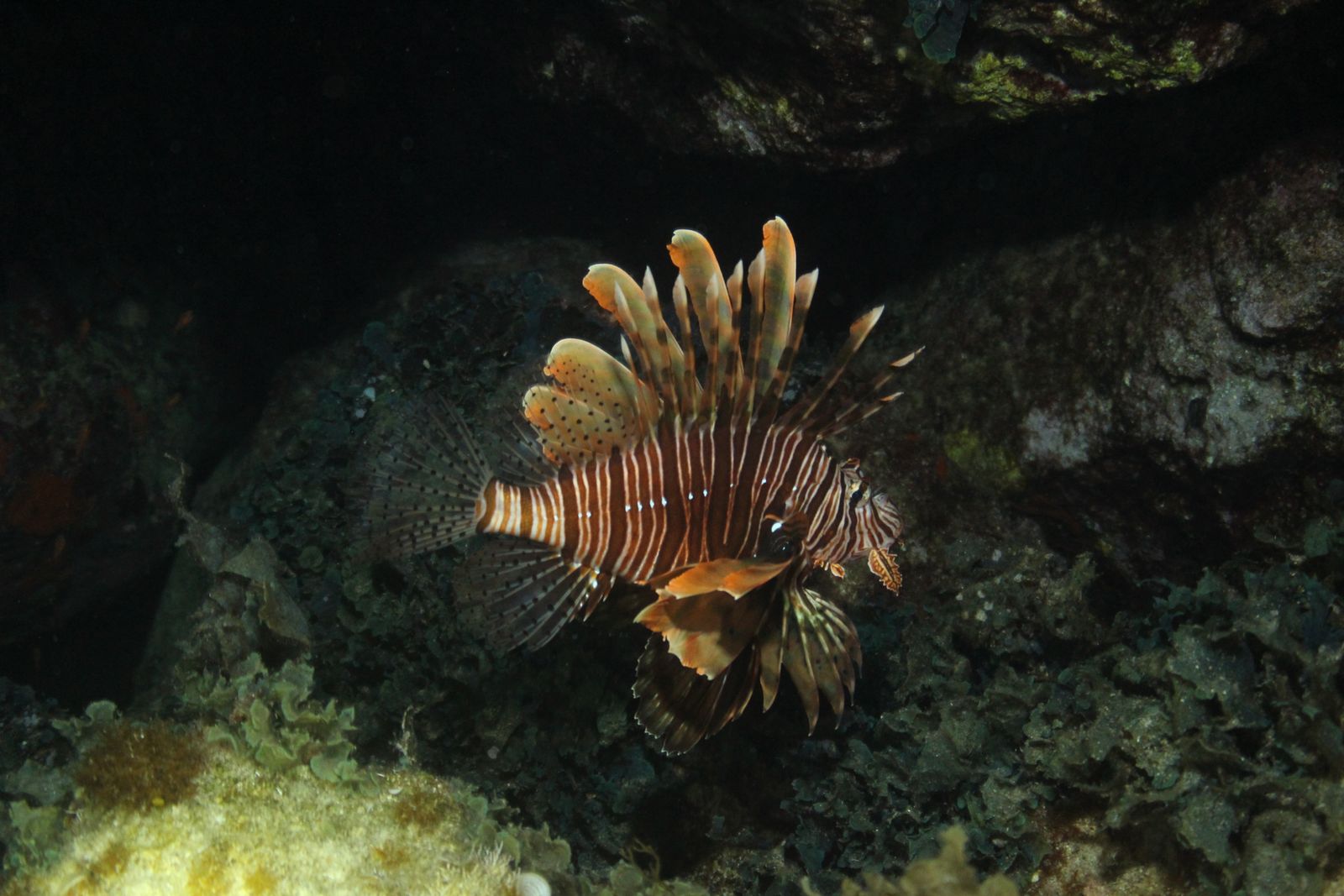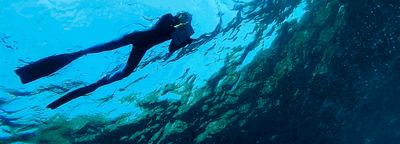- di Guia Baggi
LARNACA, Cyprus - At the entrance to the Larnaca fishing port, dotted with small white boats, a sign portrays a regal specimen of lionfish. It explains in Greek and English how this brightly colored Indo-Pacific species should be handled and that it can be eaten. At the small fish market near the docks, they are sold for 7 euros per kilo (nearly $3.50 per pound). Two fishmongers have just prepared a dozen fish for a customer. After removing their poisonous spines, the men skinned them and put them in a plastic bag. A half-full box, weighing approximately 3.5 kilograms (7.7 pounds), was still for sale.
I was in Cyprus for other reasons. I finally felt that the series I had been working on for the past few years was almost ready to be published on this website, and I took advantage of my proximity to the Suez Canal — the major pathway for exotic species to get into the Mediterranean — to get a better sense of what a warming sea will probably look like. So I asked fishers about those species that, as I had recently learned, are advancing to the central Mediterranean as it becomes warmer and more tropical: the lionfish, the blue swimming crab, the silver-cheeked toadfish and the dusky spinefoot, among others.
Actually, I was surprised not to find also the latter at the market, because I heard dusky spinefoot is very valuable around here. It costs about 25 euros per kilo (circa $12.50 per pound). I was told, in Greece, there are lots of them. As long as these novel species are tasty, they do not pose a problem, a fisherman said as he pointed to a photo of a blue swimming crab taken during the summer of 2022. According to a few fishers, both the blue swimming crab and dusky spinefoot have started appearing in large numbers with the heat.
Another fisherman showed me a video from May 2022: a boat overflows with silver-cheeked toadfish, a toxic pufferfish that absolutely should not be eaten. Like the blue swimming crab, it breaks nets and damages what’s inside of them, too. It causes only problems, Larnaca’s fishers say. But the European Union pays roughly 3 euros per kilo ($1.5 per pound) to remove this species from the sea. The toxic catch is later incinerated.
Apart from impacting the fisheries and our dinner plate, these changes in the biodiversity of our sea also transform Mediterranean ecosystems in ways that are not fully perceptible yet. Take the lionfish. It is beautiful. It is tasty. But it does not belong here. It eats everything, especially the juveniles of native species. The first lionfish sightings in Cyprus date back to 2016; this year, at least two lionfish have already been spotted in Southern Italy, nearly a thousand miles away from there (editor's note: We wrote about the expansion of the lionfish in the Med in the first issue of Lapilli+).
When I read in 2019 on Twitter, now X, about a study that reconstructed these biodiversity shifts from fishers’ direct accounts, I was still in New York. Once in Italy, I contacted one of the study’s authors, Ernesto Azzurro, a researcher currently at the Institute for Marine Biological Resources and Biotechnology of the National Research Council who, with great enthusiasm, introduced me to fundamental insights that helped me better understand these ongoing transformations. To him, I owe much of the information I have developed in this series dedicated to some of the new inhabitants of our sea.
More than three years have passed. Since then, already so much has changed. This series is an attempt to document these shifts, owing to globalization, trade and global warming, that start with the fish that are usually found in fishing nets or on fish counters. With increasing awareness of such changes, in fact, we can debate what we can do to ensure that ecosystems — already struggling from so many other stresses, including overfishing, pollution and climate change — can better respond to the arrival of new creatures more adapted to tomorrow’s climate features.
Top image: A lionfish (Courtesy of Periklis Kleitou/MER Lab).
***
Editor's note: This story concludes the series "The New Inhabitants of Our Sea," which intends to offer a preview of the magazine we have in mind. If you would like to stay updated on the evolution of our project, subscribe to Lapilli.


